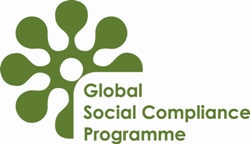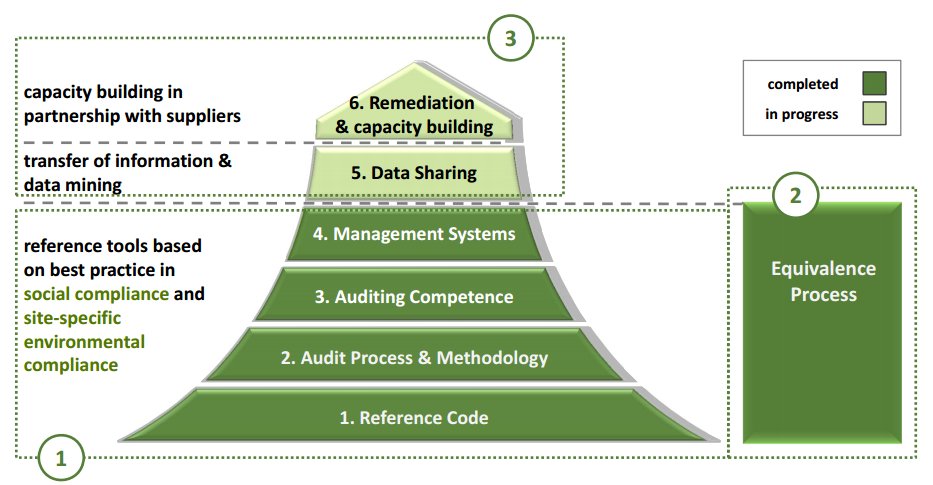 The situation is nothing new:
The situation is nothing new:
If the larger retailers of this world – the Tescos, Sainsburys, Migros, Carrefours or Auchans of this world would compare their supply chains – both, on Tier 1 as well as further down – they would invariably encounter a substantial overlap.
Many of these suppliers get audited multiple times a year precisely because of that reason. And now that Tier 2 and 3 are regularly included in the retailer’s audit focus, the same will extend to more and more members of their supply chain.
The issues in this approach are manifold, but maybe the principle ones being:
– vast amounts of duplicated efforts as a result of independent, non-consolidated efforts
– money spent primarily on audits rather then on capacity building and education
– retailers in the role as controllers, with suppliers often perceiving the situation to be patronising
– unsatisfactory situation on either side for all reasons listed above.
It is at this stage that the Global Social Compliance Programme comes into play.
GSCP: what it is and whom it serves.
Launched at the end of 2006, the initiative is a business-driven programme, and aims for continuous improvement of working and environmental conditions in global supply chains.
It is an initiative that was created by and for global buying companies themselves, wanting to work collaboratively on improving the sustainability (social and environmental) of their often-shared supply base.
Among the main goals, the organisation and its member companies are working on harmonizing existing efforts, ultimately with the goal to deliver a shared, global and sustainable approach based on consensus and best practice. For that purpose they also collaborate with international organisations such as the ITC or UNDP
In the following, I will answer some of the principle questions around the programme, and try to point out the difference to other initiatives such as e.g. Sedex.
Who and what is behind the GSCP?
The GSCP has grown out of the Consumer Goods Forum (CGF), an organisation that provides a common platform to executives, including CEOs, of global retailer. This platform is focused around advancing the consumer goods industry along 5 streams: Emerging Trends, Sustainability, Safety & Health, Operational Excellence and Knowledge Sharing & People Development.
The sustainability stream – now trying to go beyond mainstreamed aspects such as carbon measurements – is the one that ultimately resulted in the creation of the GSCP.
As a consequence there is, still, a heavy overlap between the two organisations (CGF and GSCP).
However, while CGF is clearly driven only by industry interests, the GSCP is deeply involved with organisations that work on the ground with suppliers in developing countries.
What are the focus industries?
On the surface the GSCP seems to revolve mainly around food and food supply chains.
However, this perception is mistaken, and largely due that their main target member audience are retailers as well as brands sold through retailers.
As a consequence, in additions of the Tescos and Walmarts of this world, one finds quite prominently brands such as Unilever or Chiquita. Hence, it is more accurate to say that the organisation focuses on any type of good – good or not – that is retailed in a typical high street grocery store. In business terms: Fast-Moving Consumer Goods (FMCG), from fashion to toys and stationary as well as many food products. This evidently also covers the fashion and apparel sector.
What is the GSCP role in context of other organisations or e.g. Sedex?
GSCP’s main idea and intend is to avoid duplication of efforts, and hence freeing up of resources to actually push the sustainability agenda forward.
The main efforts, and their Reference Tool’s purpose therefore is to foster convergence in practise and among the retailers. In other words, the main aim is to develop an approach that overarches the specifics of programmes such as BSCI, SAI or ETI, and to spread best practise as agreed by the retailers themselves.
It is for the same reason that Sedex and GSCP have been working collaboratively since at least 2012, in order to align their supplier databases and criteria.
What remains to be seen is how the GSCP efforts and the efforts of organisations such as e.g. ZHDC and the Sustainable Apparel coalition will align, or not. For now there do not seem to be any indicators that there is either a planned, least intended, alignment or collaboration.
What is the GSCP’s ‘main output’?

The answer to this is fairly clear cut: Their Reference Tool.
More accurately though, it is not a single reference tool but rather a set of reference tools that build upon one another.
The set as a whole includes the tools typically found in a monitoring system: a reference code of conduct, reference audit process and methodology, reference guidelines for auditing competence and reference tools on buying companies’ management systems, for both social and environmental compliance.
At the very basic level (cf. illustration) this is a social and environmental reference code. The code is then refined further by an agreed upon common audit process & methodology, specific audit competences and finally a management system for audit and supplier data.
The next step, currently worked on, is the enabling of data sharing, which then will be followed by the application of the obtained data to forge specific activities around remediation and capacity building.
Conclusion
The GSCP seems to be a fairly interesting programme, long-overdue. What surprises more than anything is the fact that it is not more widely known despite it’s engagement with high-level executives as well as large international organisation.
Further, and at least seen from the outside, it looks as if the programme has managed to achieve some good results in the shape of their set of reference tools, and that with the next step to be taken (data sharing) the agenda is clearly aligned with the most important demands on an international level.
What will be interesting to be seen, at least in fashion and apparel terms, is how the activities of the GSCP and those of, for example, the Sustainable Apparel Coalition (SAC) will eventually align, and whether or not these organisations are actively seeking to engage in a common dialogue.
The fact that the SAC is based in the US and that GSCP is based in Paris – resulting in cultural but also engagement style difference in addition to a geographical gap in their membership base – makes any reasonably educated guess as good as impossible.

